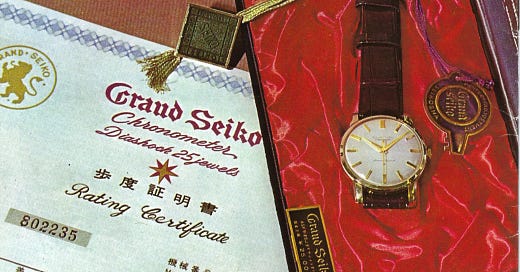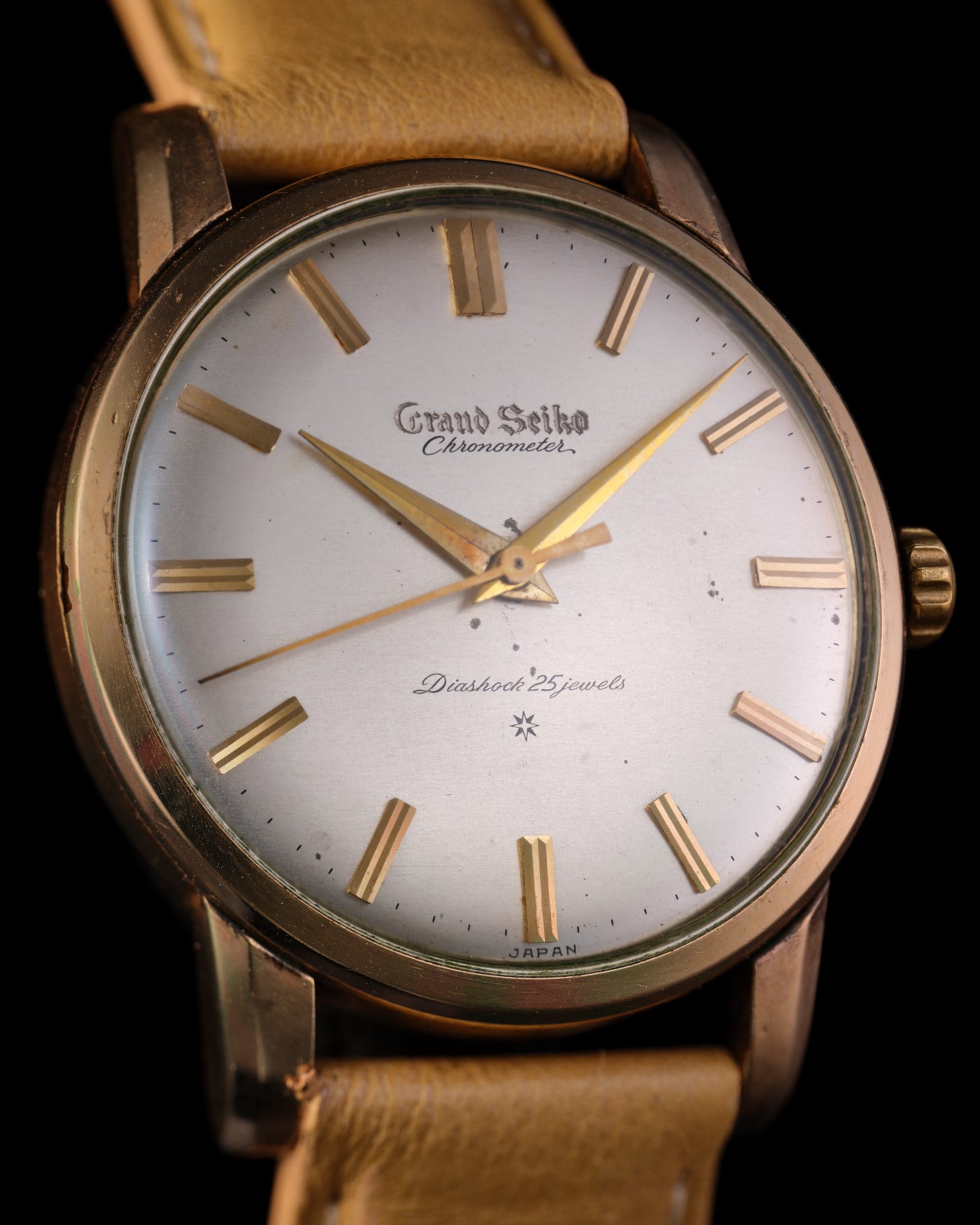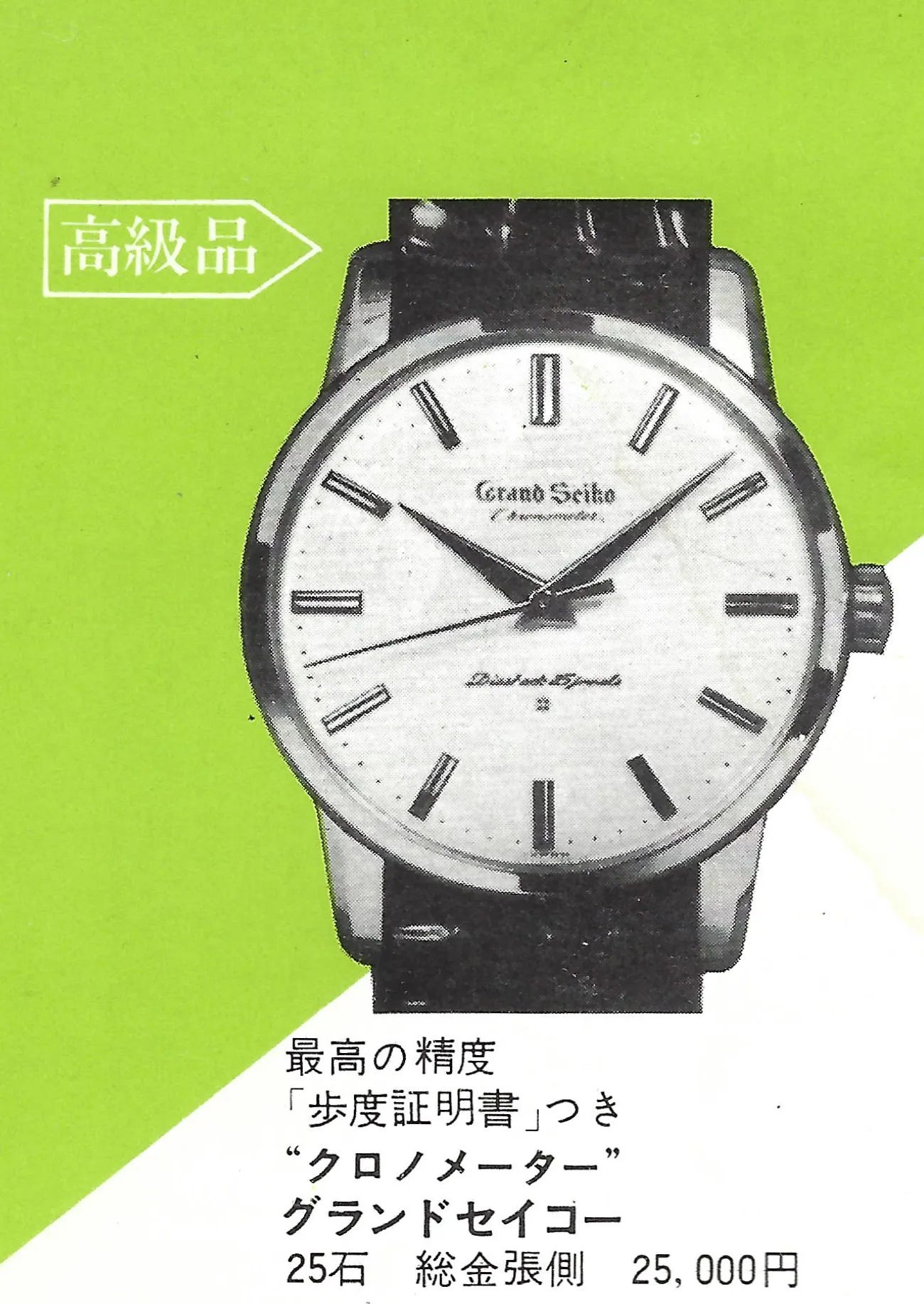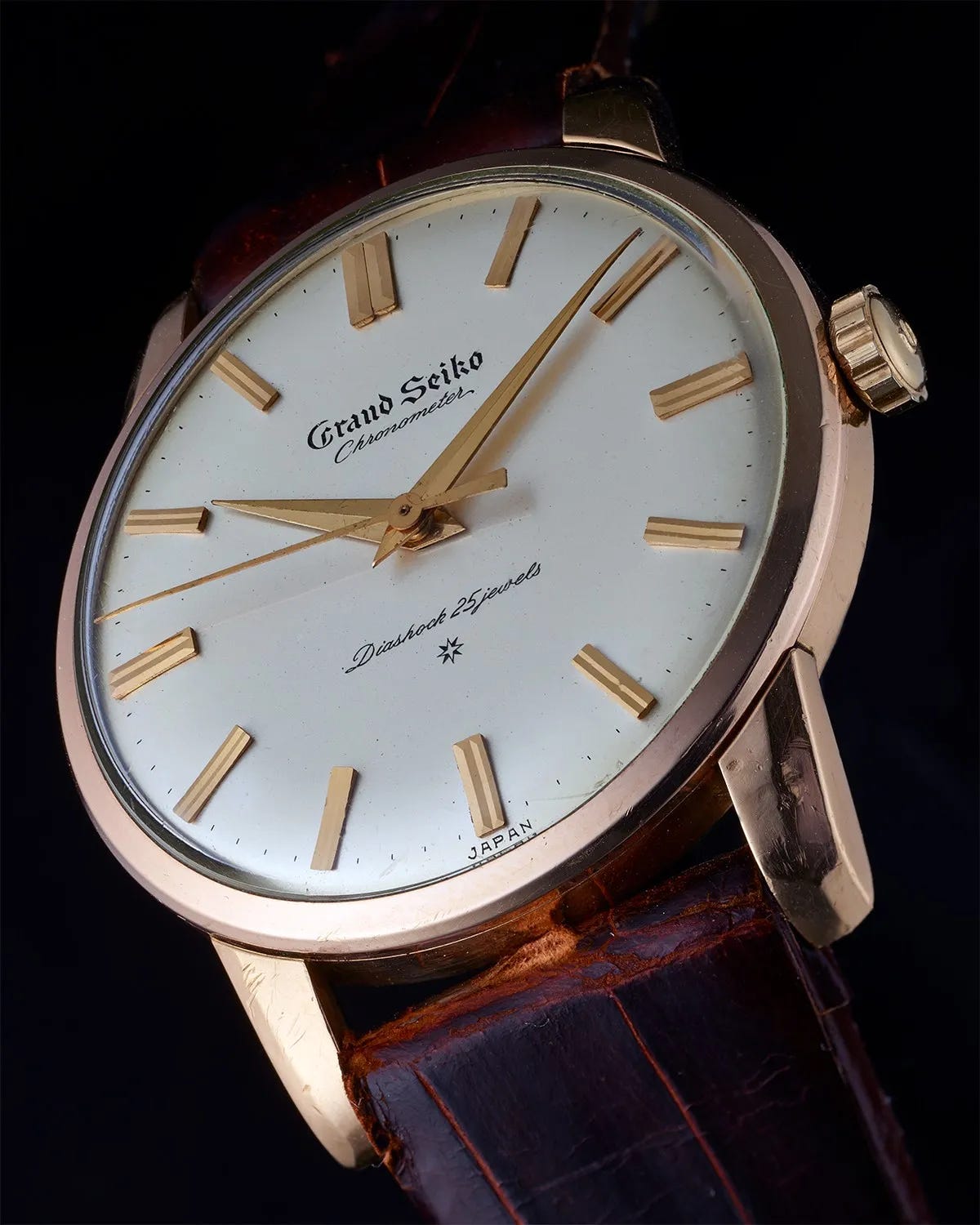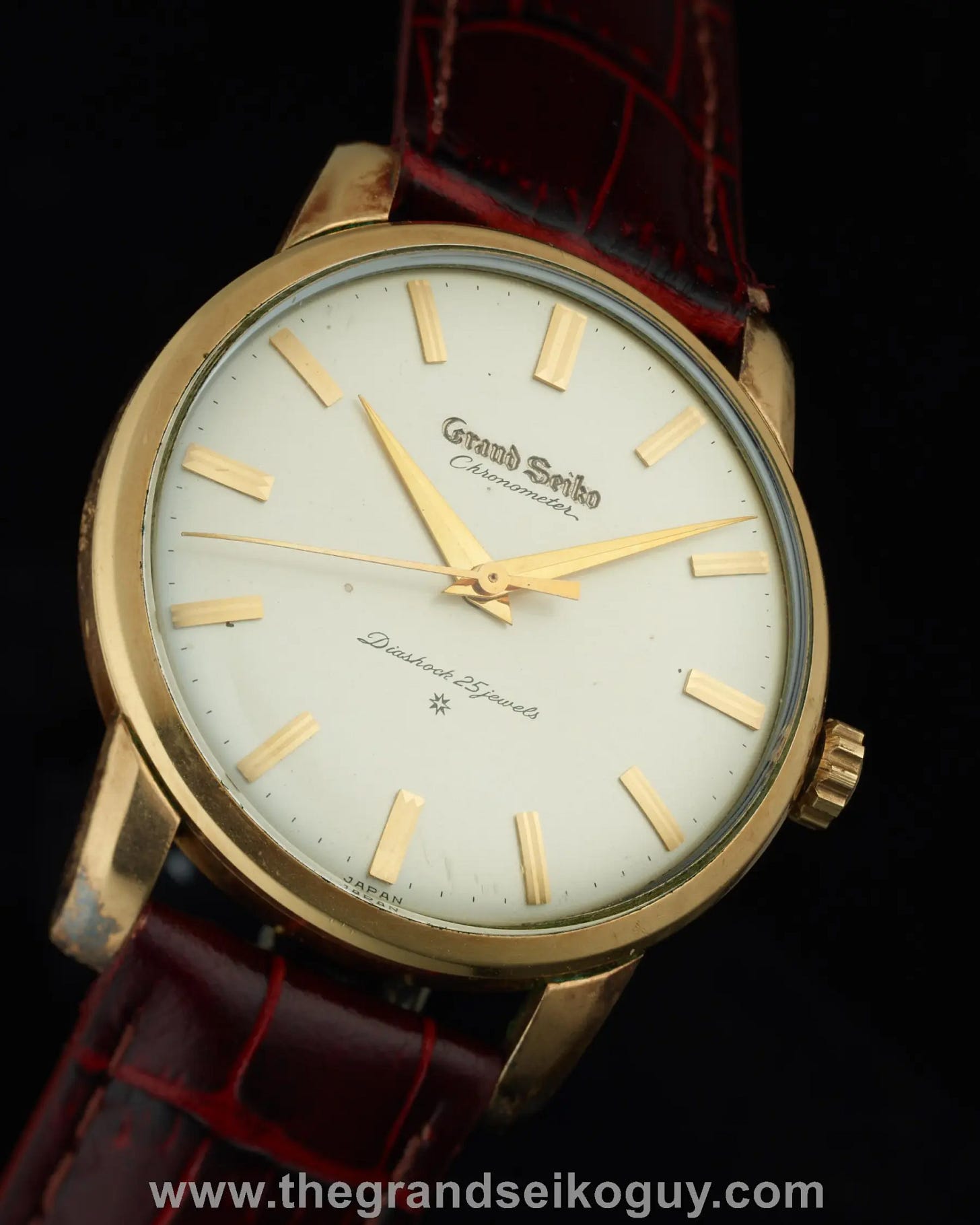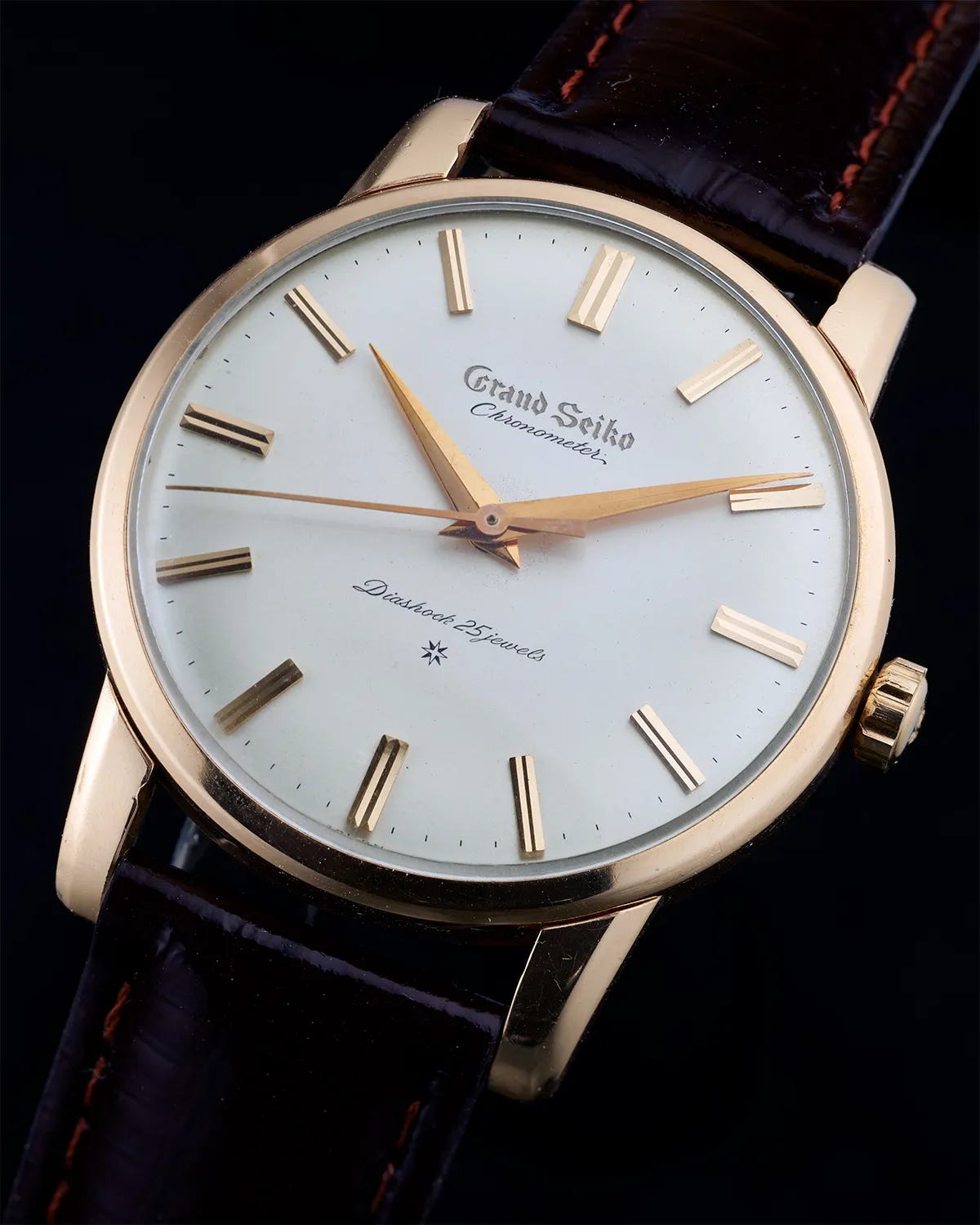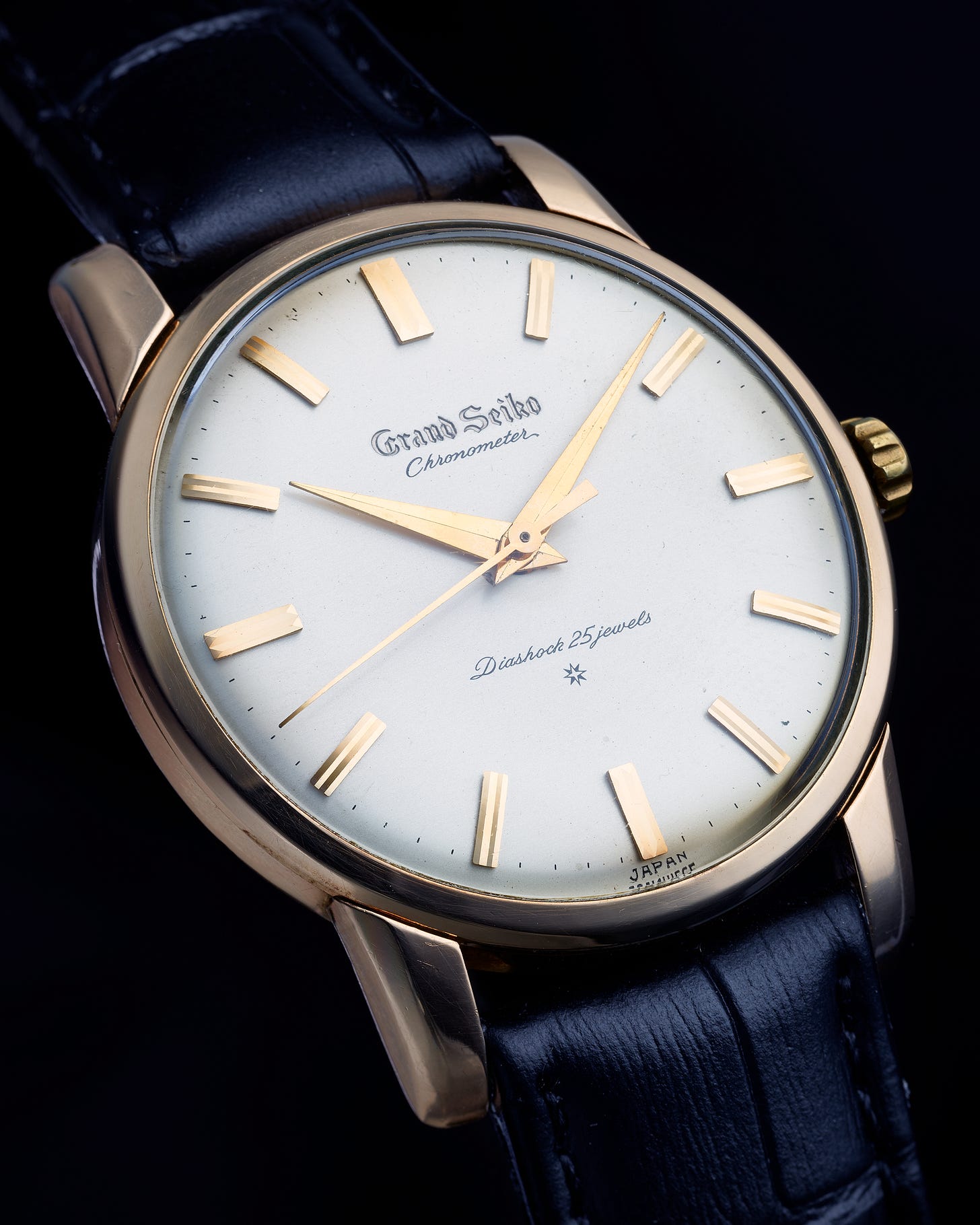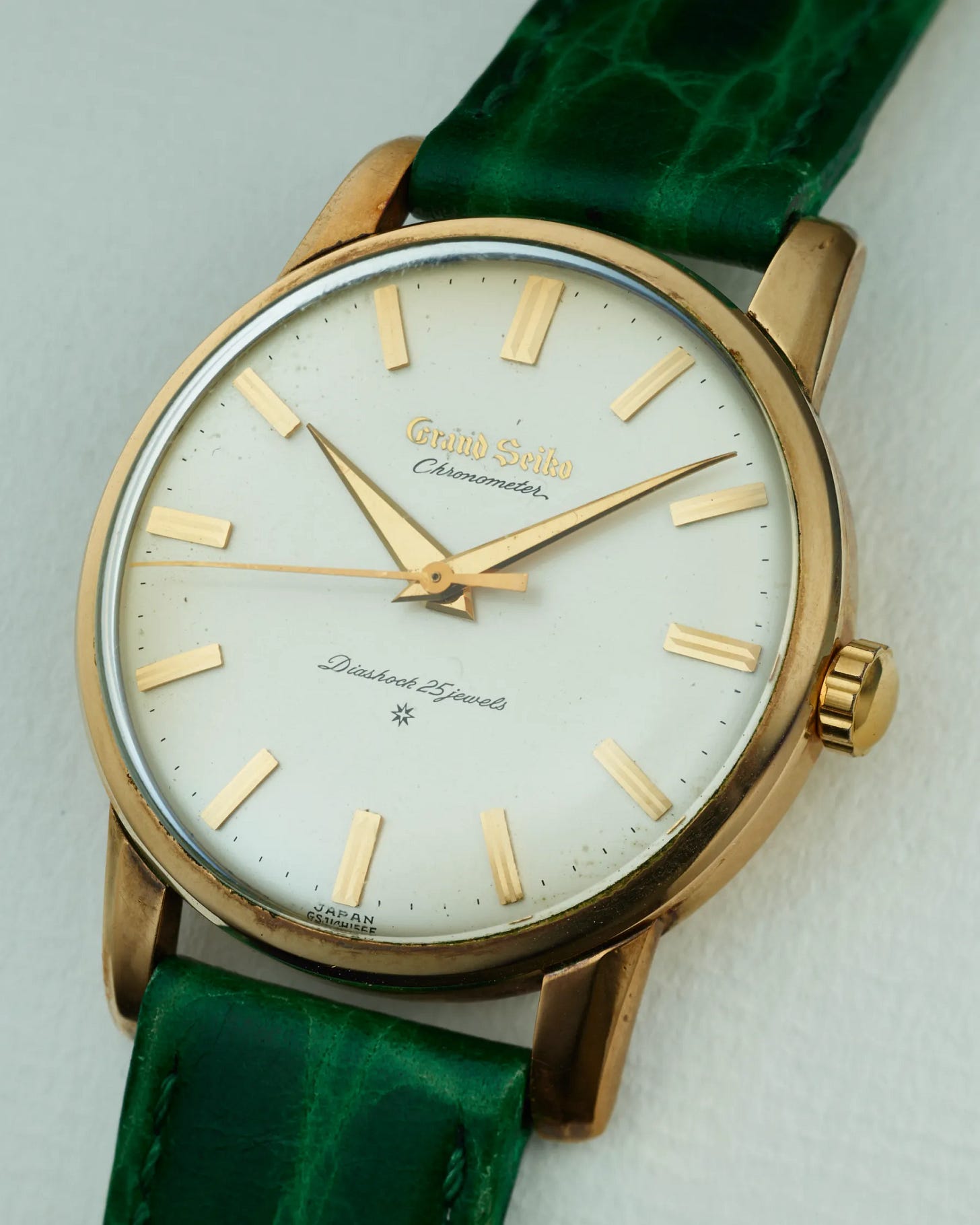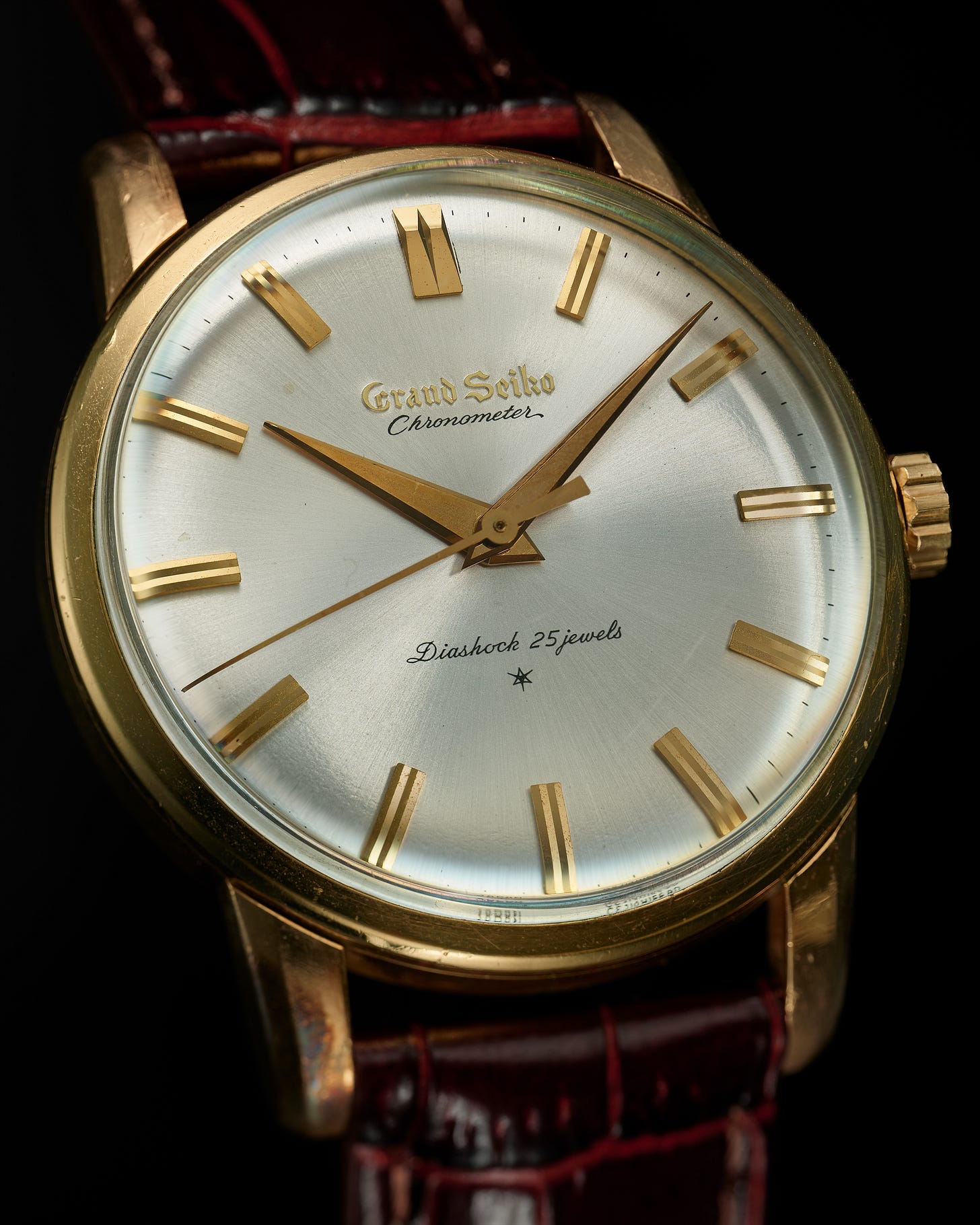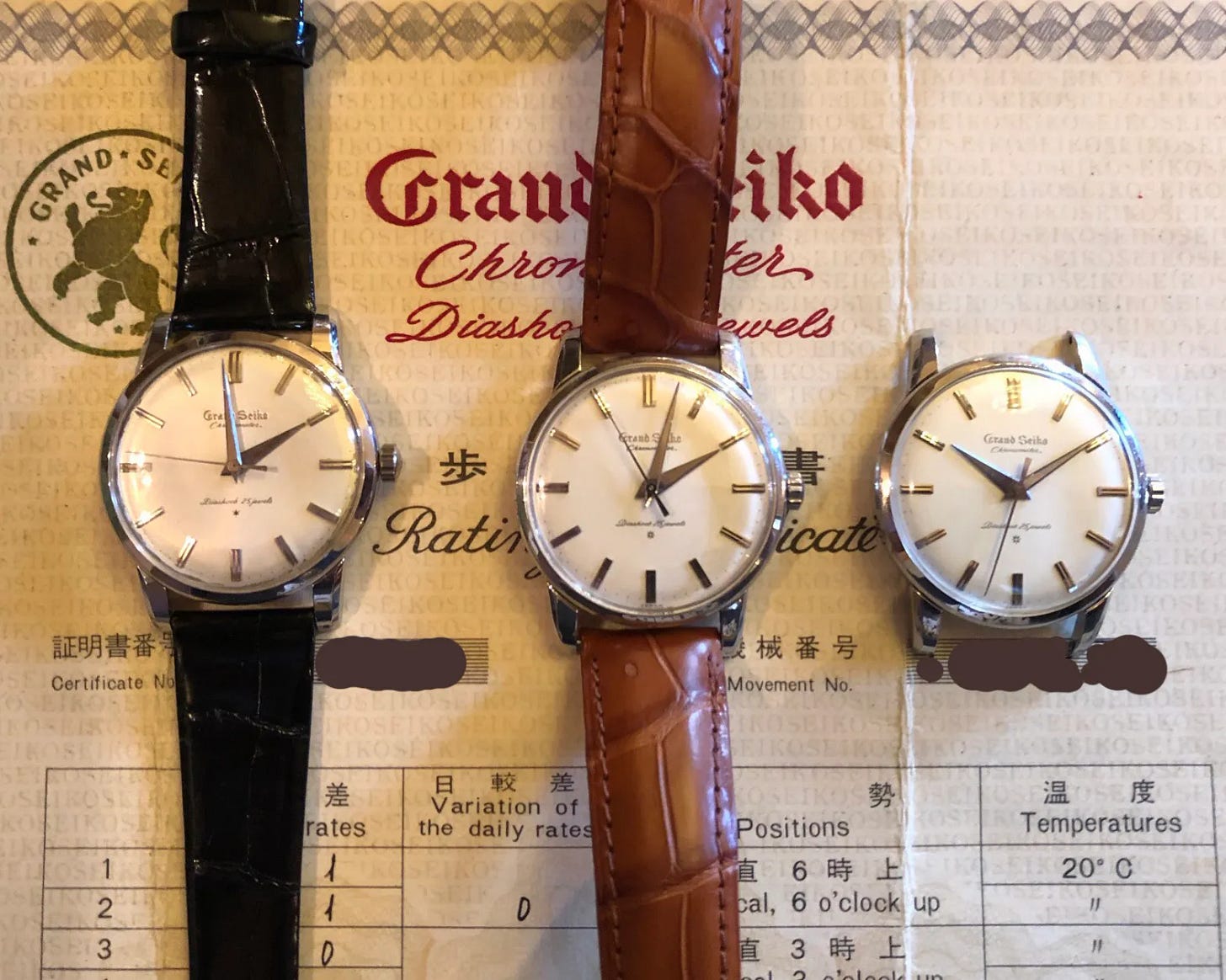Preamble
For the benefit of those subscribers who have signed up recently, over the last half year or so, I have been publishing weekly newsletters featuring scans of vintage Grand Seikos that appeared in the Seiko catalogues of the 1960’s and 1970’s, culminating in last week’s newsletter focusing on the Grand Seiko references for women.
The intention behind this series is to cover in detail every single vintage Grand Seiko, with - where possible - corroborating contemporaneous evidence for the legitimacy of the reference.
Having now covered all the official Seiko JDM catalogues of the period, there is one more major task to fulfill, and that is to document the legitimate references that never appeared in a catalogue.
These references can be broadly grouped into three different categories –
Vintage Grand Seikos that did not appear in the regular catalogues (annual, biannual, supplemental, or Special Luxury), but were featured in other official publications such as Seiko News and Seiko Sales. Examples would include both variants of the 43999.
Vintage Grand Seikos that appear neither in the regular catalogues nor other official publications (to the best of my knowledge following research to-date), but clearly were available for sale to the public based on extensive examination watches in collections and that have come to market over the past decade, and also following consultation with other experts. Examples would include the platinum cased “Firsts”.
Vintage Grand Seikos that were commissioned by third party companies, and would not have been available for sale to the general public. Examples would include the Toshiba 25 year service anniversary models.
Each of the seven men’s vintage Grand Seiko series features references that fall into at least one of these categories. Because there is a lot to cover, I will be splitting this study over the course of several newsletters, structuring the newsletters by series, and then by the above three categories.
We kick off this week detailing the watches from the “First” series.
You can view the previously published newsletters in this series - which is now complete and covers all the vintage Grand Seiko watches appearing in catalogues - here.
Grand Seiko “First” series references missing from the catalogues
Four years ago, I published a comprehensive article on the TGSG website that detailed the different variants of the first Grand Seiko with filled gold case. For those not familiar with the “First” variants, I would encourage you to read that article for some deeper background.
The article discusses eight clearly distinct reference variants, of which I have only discovered two documented in contemporary official Seiko publications.
Grand Seiko “First” with carved logo dial - early split-12 index variant
Although launched on December 18th 1960, the earliest official publication to show a Grand Seiko First that I have found is the March 1961 issue of Seiko News, which pictures the early carved dial split-12 index variant.
Here is a studio shot of a watch with this dial -
Produced alongside the print logo variants and later into 1960, I have seen examples of this reference dated from April through to November 1960 (although with no examples of any First produced July). These watches can be distinguished from later carved dial variants by the fact that the 12 o’clock index is “split” and made from two separately applied pieces of metal.
Grand Seiko “First” with raised logo dial
In addition to the above publication, there is a Seiko brochure that I believe dates from either 1962 or 1963, that depicts the common raised logo dial variant.
The image below shows the watch pictured in that brochure.
A studio shot -
These “raised logo” dialed watches are by far the most commonly found Firsts on the market, and were in production from as early as June 1961, right the way through to the final month of production of the reference in August 1963.
Below are detailed the remaining six filled-gold dial variants of the Grand Seiko First that, to-date, I have not found images of in any official Seiko publication, and that were featured in that original article.
Grand Seiko “First” with print logo dial
Without question the most desirable of all the gold filled examples of the first Grand Seiko would be those with printed logos. From extensive study of the Firsts that have come to market in the last decade, I am very confident in saying that these print logo variants were only produced in the first three months of production - April through to June, 1960.
Grand Seiko “First” with early carved logo dial with single piece 12 o’clock index
With the earliest examples dating from October 1960, there was clearly a transitional period where both split-12 and single-12 index carved logo dialed watches were being produced.
The production of this variant continued through to as late as July 1961.
Grand Seiko “First” with late carved logo dial
It is very clear from studying many carved logo dials over the years that the method of creating the carved logo changed over time. Whilst I am no longer as convinced as I once was that there was a clear point in time where the production method switched over, there can be no doubting that at least two completely different approaches and tooling were used in creating the carved logos. The earliest examples of this method of creating the logo that I have seen, date from October 1960.
Grand Seiko “First” with carved logo transitional dial
For a short period in 1960, we find watches with E suffixed dial codes as see above. Earlier carved and print logo dialed Firsts have dial code “GSJ14H156”. On these “transitional” pieces, the dial code - as can just about be seen in the above photo - is “GSJ14H156E”. I have seen examples of this variant dating from April through to June 1960, and they were produced alongside the “GSJ14H156” dialed watches.
This reference can also be found with the flat, as opposed to “mountain” handset.
Grand Seiko “First” with raised logo transitional dial
Interestingly, another transitional variant with the same “GSJ14H156E” dial code exists, but with the raised logo. I have seen watches dating from June through to August 1961 with this dial, and they were produced alongside regular carved logo dials, E-suffixed carved logo dials, and GSJ14H156E SD dial coded regular raised logo dials.
Grand Seiko “First” with raised logo AD dial
After the print logo variant, the AD dialed Firsts are certainly the next rarest of the gold filled cased watches. All examples that I have seen date from either April or August 1963, and were produced alongside the raised logo dials, albeit in far fewer quantities - I have seen perhaps no more than a dozen of these watches.
Since the publication of my original article, an additional variant of the AD dialed “First” has surfaced, with different dial indices to those usually seen.
Grand Seiko “First” with raised logo AD dial - variant with different indices
Just two examples of this variant have so far surfaced. Interestingly, both have dial stamps on the reverse of the dial, indicating dial (not watch) production in July 1965.
Clearly this is far too late to be a regular production watch, and it is believed that these watches have “service” dials.
Grand Seiko “First” in platinum with carved logo, raised logo, and AD dials
In addition to the above filled gold cased watches, there is of course also the legendary Grand Seiko “First” cased in platinum.
Whilst exceedingly rare, because the platinum cased First was available over much of the period that the filled gold reference was on sale, there are multiple variants of it in existence. The photograph below – of three watches from two different collections in Japan – is to the best of my knowledge the only one ever taken to show all three variants that I believe were in production.
As with the gold filled cased watch, we find examples of the platinum First with AD raised logo dials, SD raised logo dials, and SD carved logo dials.
The earliest platinum cased First that I know of has the carved logo dial, and dates from May 1961, and the latest, with AD dial, from August 1963.
Interestingly, there would appear to have been a run of platinums created in September 1962, as I know of five watches with case serials 2900xx, and with four of those watches having case serial codes between 290008 and 290029.
In next week’s newsletter, I will document the watches from the 57GS and 44GS series never to appear in the official catalogues.

